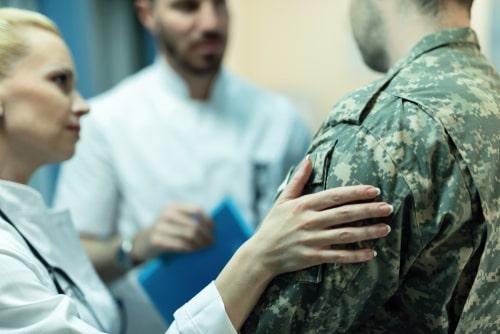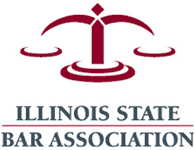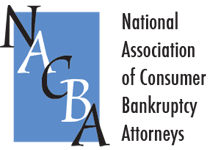121 S. Wilke Road, Suite 301, Arlington Heights, IL 60005
Home and Hospital Visits for Your Convenience
Serving Clients Across 7 Illinois Locations
Recent Blog Posts
How Can Meconium Aspiration Affect Newborns in Illinois?
 Even though childbirth is a common medical procedure that is performed in hospitals on a daily basis, there are a variety of issues that can arise during labor and delivery that may result in birth injuries. If doctors, nurses, or other personnel that assist with childbirth do not take the correct measures to address complications or respond to potential concerns, a child or mother may suffer serious harm. Meconium aspiration is one issue that staff members should be aware of, and it can lead to a variety of health concerns for a child.
Even though childbirth is a common medical procedure that is performed in hospitals on a daily basis, there are a variety of issues that can arise during labor and delivery that may result in birth injuries. If doctors, nurses, or other personnel that assist with childbirth do not take the correct measures to address complications or respond to potential concerns, a child or mother may suffer serious harm. Meconium aspiration is one issue that staff members should be aware of, and it can lead to a variety of health concerns for a child.
What Is Meconium Aspiration?
The first stool that a child passes after being born consists of meconium, which is a thick, tar-like substance. In some cases, a child may pass meconium while still in the womb. When meconium becomes mixed with the amniotic fluid, the child may inhale or aspirate this substance into their lungs during labor and delivery. This can lead to a condition known as meconium aspiration syndrome.
Can Service Members Sue the U.S. Military for Medical Malpractice?
 For the past several decades, members of the military who are on active duty have been unable to pursue personal injury lawsuits against the U.S. government based on injuries or other forms of harm they suffered during their service. However, this changed in 2019 when Congress passed the National Defense Authorization Act, which contained provisions allowing service members to file claims seeking compensation for medical malpractice. In June of 2021, the Department of Defense issued new regulations detailing the procedures that will be followed in these types of claims.
For the past several decades, members of the military who are on active duty have been unable to pursue personal injury lawsuits against the U.S. government based on injuries or other forms of harm they suffered during their service. However, this changed in 2019 when Congress passed the National Defense Authorization Act, which contained provisions allowing service members to file claims seeking compensation for medical malpractice. In June of 2021, the Department of Defense issued new regulations detailing the procedures that will be followed in these types of claims.
Pursuing Compensation for Medical Malpractice at a Military Hospital
Active-duty service members can pursue medical malpractice claims for most injuries or illnesses that occurred because of treatment at a medical facility from a health care provider working for the Department of Defense, as long as the injury was “incident to service.” This includes treatment provided at hospitals or medical centers, but not treatment provided in the field, such as on a ship or plane or at a battalion aid station.
How Can Whiplash Affect a Car Accident Victim’s Health and Well-Being?
 There are multiple types of injuries that can occur in a car accident, and whiplash is one of the most common issues that can affect victims. These types of injuries may affect a person’s back and neck, as well as other parts of their body, and they can lead to a number of ongoing health issues. While whiplash often occurs in rear-end collisions, it can also affect drivers and passengers in multiple other types of accidents, including high-speed collisions or those involving relatively low speeds. By understanding the effects that whiplash can have on a person’s life and health, victims can make sure they will be able to pursue compensation that fully addresses their damages.
There are multiple types of injuries that can occur in a car accident, and whiplash is one of the most common issues that can affect victims. These types of injuries may affect a person’s back and neck, as well as other parts of their body, and they can lead to a number of ongoing health issues. While whiplash often occurs in rear-end collisions, it can also affect drivers and passengers in multiple other types of accidents, including high-speed collisions or those involving relatively low speeds. By understanding the effects that whiplash can have on a person’s life and health, victims can make sure they will be able to pursue compensation that fully addresses their damages.
Effects of Whiplash
When one vehicle collides with another, the occupants of the vehicle that is struck may be suddenly and unexpectedly thrown forward, backward, or to the side. This can cause a person’s head to snap back and forth, putting a great deal of pressure on the neck and forcing it into unnatural positions. When this happens, the muscles, tendons, and ligaments in the neck may be damaged. A person may also experience nerve damage, fractures to cervical vertebrae, or herniated discs.
Is a Nursing Home Liable for Fall Injuries Suffered by Residents?
 Many families rely on nursing homes to provide a safe and healthy environment for elderly loved ones who can no longer fully care for themselves. While many nursing homes provide quality care, there are some facilities that do not meet these standards, and residents may suffer harm due to nursing home neglect or abuse. Of the different types of injuries that can affect nursing home patients, falls are among the most common, and in many cases, they are preventable. Family members will want to determine whether a fall injury that affected their loved one was caused by nursing home negligence, and by working with an attorney, they can take action to hold a negligent facility responsible.
Many families rely on nursing homes to provide a safe and healthy environment for elderly loved ones who can no longer fully care for themselves. While many nursing homes provide quality care, there are some facilities that do not meet these standards, and residents may suffer harm due to nursing home neglect or abuse. Of the different types of injuries that can affect nursing home patients, falls are among the most common, and in many cases, they are preventable. Family members will want to determine whether a fall injury that affected their loved one was caused by nursing home negligence, and by working with an attorney, they can take action to hold a negligent facility responsible.
Liability for Nursing Home Fall Injuries
Elderly or disabled nursing home residents can suffer multiple types of injuries in falls. These may include broken bones, such as hips or wrists, as well as traumatic brain injuries. Because a person may already be in a vulnerable physical condition, fall injuries can have drastic effects on their long-term health and well-being. A nursing home may be liable for fall injuries that occurred because of negligence, which may include:
UPDATED: Types of Soft Tissue Injuries You Can Suffer in a Slip or Fall
 Originally published: July 7, 2018 -- Updated: November 1, 2021
Originally published: July 7, 2018 -- Updated: November 1, 2021
UPDATE: In addition to understanding the types of injuries that can occur in a slip and fall accident, victims will need to determine who may be held liable for these injuries and the types of damages they may be able to recover. An experienced personal injury lawyer can help identify the liable parties and ensure that a victim takes the correct steps to pursue compensation.
When slip and fall injuries take place on someone else’s property, the property owner may be held liable based on their failure to take the proper measures to protect visitors’ safety. A property owner or the tenant in control of a property, such as the owner of a retail store that leases space from a property owner, is responsible for addressing any hazards on the property. If damaged walking surfaces are not repaired properly, spills or wet floors are not cleaned up correctly, or warnings are not provided to ensure that visitors understand their risks of injury, a property owner or tenant may be held liable for injuries that occur as a result.
When Can Defective Auto Parts Cause Car Accidents and Injuries?
 For most Americans, driving is a part of everyday life, and people accept certain types of risks when they are behind the wheel or riding in a vehicle. While the risks of injury in a car accident are present whenever a vehicle is on the road, drivers and passengers expect vehicles to protect them from harm as much as possible. However, many cars and trucks contain defective parts that may affect the safety of drivers and passengers. Those who are injured by auto parts that were designed, manufactured, or installed incorrectly can work with a personal injury attorney to determine who was responsible and pursue compensation for their damages.
For most Americans, driving is a part of everyday life, and people accept certain types of risks when they are behind the wheel or riding in a vehicle. While the risks of injury in a car accident are present whenever a vehicle is on the road, drivers and passengers expect vehicles to protect them from harm as much as possible. However, many cars and trucks contain defective parts that may affect the safety of drivers and passengers. Those who are injured by auto parts that were designed, manufactured, or installed incorrectly can work with a personal injury attorney to determine who was responsible and pursue compensation for their damages.
Common Auto Part Defects
Vehicles contain multiple types of complex parts, and the failure of any one of these systems can cause serious injuries to the vehicle’s occupants. Some auto parts that commonly fail and cause accidents or injuries include:
5 Forms of Driver Negligence That Can Lead to Motorcycle Accidents
 Riding a motorcycle is inherently more dangerous than driving or riding in a passenger vehicle. Cars and trucks have a number of safety systems meant to protect their occupants, such as seat belts and airbags. The structure of a vehicle itself also provides protection, and the body of a car or truck contains crumple zones that help keep occupants safe, even in a high-speed crash or rollover accident.
Riding a motorcycle is inherently more dangerous than driving or riding in a passenger vehicle. Cars and trucks have a number of safety systems meant to protect their occupants, such as seat belts and airbags. The structure of a vehicle itself also provides protection, and the body of a car or truck contains crumple zones that help keep occupants safe, even in a high-speed crash or rollover accident.
Without the safety provided by being inside a vehicle, motorcyclists are much more likely to be seriously injured or killed in a collision. However, most motorcyclists recognize this fact, and they take extra care to be as safe as possible. Unfortunately, many drivers do not use the same level of care, and they can inflict severe injuries in a motorcycle accident. By understanding the types of driver negligence that are likely to cause a collision and working with an experienced lawyer, injured motorcyclists can take action to hold a driver responsible for their injuries.
When and Where Are Pedestrian Accidents Most Likely to Happen?
 October is National Pedestrian Safety Month, and public safety officials are taking this time to highlight the dangers that pedestrians face as they use the roads. Pedestrian accidents can be incredibly harmful, since a vehicle that weighs thousands of pounds can inflict serious bodily harm on a person, even if the vehicle is traveling at low speeds. In many cases, pedestrian accidents and injuries are caused by drivers who violate traffic laws or otherwise act negligently. Victims of these types of accidents can get legal help from an attorney as they seek financial compensation from a driver who struck them, ensuring that the driver will be held responsible for their actions and that the victim and their family will be able to meet their needs as they recover from their injuries.
October is National Pedestrian Safety Month, and public safety officials are taking this time to highlight the dangers that pedestrians face as they use the roads. Pedestrian accidents can be incredibly harmful, since a vehicle that weighs thousands of pounds can inflict serious bodily harm on a person, even if the vehicle is traveling at low speeds. In many cases, pedestrian accidents and injuries are caused by drivers who violate traffic laws or otherwise act negligently. Victims of these types of accidents can get legal help from an attorney as they seek financial compensation from a driver who struck them, ensuring that the driver will be held responsible for their actions and that the victim and their family will be able to meet their needs as they recover from their injuries.
Pedestrian Accident Statistics
Over the past 10 years, pedestrian fatalities have increased significantly. The initial analysis of data from 2020 indicates that the total number of pedestrian accident injuries decreased from the previous year. However, the amount of traffic on the roads also decreased in 2020 due to the COVID-19 pandemic, and the rate of pedestrian fatalities for each mile traveled by vehicles throughout the United States actually increased by 20 percent. Studies of data from 2020 also found that:
How Can Severe Burn Injuries Affect a Victim’s Long-Term Health?
 There are multiple types of catastrophic injuries that can result in long-term health issues or permanent impairments. Burn injuries can be especially serious, and they can result in severe pain, complications, scarring and disfigurement, and psychological trauma. By understanding the ways a severe burn injury can impact their health and well-being, victims can pursue compensation that fully addresses the ways they have been affected.
There are multiple types of catastrophic injuries that can result in long-term health issues or permanent impairments. Burn injuries can be especially serious, and they can result in severe pain, complications, scarring and disfigurement, and psychological trauma. By understanding the ways a severe burn injury can impact their health and well-being, victims can pursue compensation that fully addresses the ways they have been affected.
Effects of Moderate or Severe Burn Injuries
Burns are classified into different categories depending on their severity. First-degree burns involve redness of the skin, and they are not usually serious unless they affect a large percentage of a person’s body. Second-degree burns involve redness, blistering, and damage to lower layers of skin. These burns may be considered moderate or severe if they cover more than 10 percent of a person’s body or affect sensitive areas such as the face or hands. Third-degree burns are much more serious, and they may affect all layers of the skin. Fourth-degree burns are even more severe, and they may affect tissues below the skin. Third- or fourth-degree burns will often require hospitalization and surgery, and they can cause permanent scars.
Can I Receive Compensation for PTSD Related to a Serious Injury?
 A personal injury can affect someone in many ways, and in addition to suffering physical harm, a person may also experience emotional trauma. These issues can linger for years after a person has fully healed from the physical effects of an injury, and they may even impact a victim for the rest of their life. Post-traumatic stress disorder (PTSD) commonly affects injury victims, and those who have suffered emotional trauma due to an injury that was caused by someone else will need to understand how they can receive financial compensation that addresses these issues.
A personal injury can affect someone in many ways, and in addition to suffering physical harm, a person may also experience emotional trauma. These issues can linger for years after a person has fully healed from the physical effects of an injury, and they may even impact a victim for the rest of their life. Post-traumatic stress disorder (PTSD) commonly affects injury victims, and those who have suffered emotional trauma due to an injury that was caused by someone else will need to understand how they can receive financial compensation that addresses these issues.
Effects of PTSD
Anyone who experiences a traumatic event may suffer from post-traumatic stress disorder, and this issue may occur following car accidents, assaults, sexual abuse, dog bites, or other cases where a person suffered or witnessed a serious injury. PTSD can affect a person in multiple ways, including:

 Spanish
Spanish


















